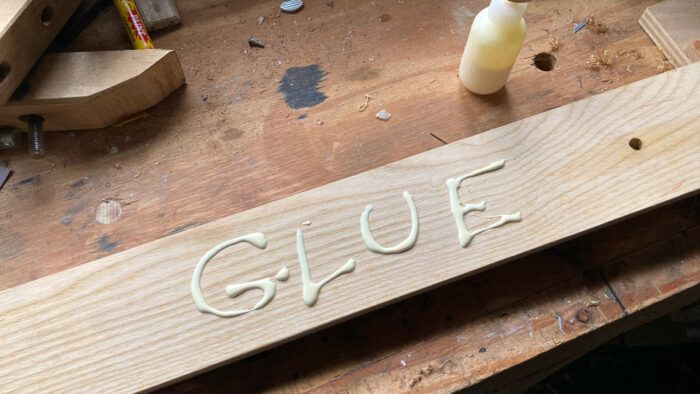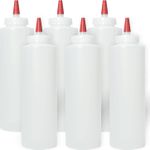Wood glue is wood glue
Vic braces for an onslaught of opinions as he vows one PVA glue is about as good as another.
Alright, I have a feeling this one might get some backs up. When it comes to PVA glues, I don’t think one brand is better than the other.
There. I said it.
I have been woodworking for almost 25 years (not a flex, just a fact), and I have used nearly every PVA wood glue that is available to me. I have used the major brands and the lesser-known brands that are relatively new to North America. I’ve also used the various “home” formulations available at some hardware stores. For example, in Canada, we have a national hardware store chain called Home Hardware that used to sell their own private label PVA, and I used it!
Over the years, I’ve built various projects, using different brands, and I’m happy to report that nothing has fallen apart or delaminated because of the glue I’ve used. To my mind, there is no difference in the efficacy of different types of PVAs. So, how does one choose a brand if this is the case?
The good news is that, from my experience, the price you pay for glue doesn’t influence how well it works. During my first few years of woodworking, I used the cheapest glue I could find because that was what I could afford. I assembled a few boxes and furniture pieces with the cheap stuff, and all is well. There are even some veneered panels that are doing just fine despite using inexpensive glue. I do recall there being some bleed-though to deal with on some veneered pieces, but no issues with adherence.
That’s not to say there is no difference among brands. I’m not a chemist and will not regurgitate various blurbs of marketing copy at you (no one does marketing copy with more zeal than finish and adhesive companies). Over time, I have narrowed it down to one glue I like to use. I don’t like having multiple formulations of glue hanging around the shop because it’s just more clutter; honestly, they don’t act much differently. The only exception is what I use for veneering—I have settled on a cold press PVA to help prevent bleed-through.
How did I narrow down to one brand of glue? Here are some of the factors I considered:
- The glue I use is great for indoor and outdoor use, which is not a significant factor, but I won’t need a special bottle of glue hanging around for the once-a-year (maybe) that I do an outdoor project.
- The glue I like is also thick enough to stay where I put it (especially on vertical surfaces) without being a “thick” variation that I find dries chalky.
- The open time is average, which gives me plenty of time to assemble without becoming a whirling dervish.
- The price is the middle of the road and again, nothing has failed due to its use.
- Most importantly, the glue is white and dries translucent. The last thing I want to do is to try to match my adhesive color to that of my wood. Dark wood glue? Seriously? My goal is to avoid seeing my gluelines and not to turn them into a feature!
So, what glue am I talking about? Well, I’m not a brand ambassador for glue companies or getting paid to say anything here, but I often give shout-outs on my socials about the products I like and use. So, if you want to know my go-to brand, check out my IG page, and you will see the glue I use in one of my recent posts.
Before you jump on your keyboard to tell me how wrong I am, I ask that you remember, “To each their own.” I like the glue I use, but you are not obligated to use what I like. If you like your glue, then please keep using it. I believe strongly in not letting “the man” tell me what adhesives to use. That said, I don’t think one brand is better; they’re just different, which is OK.
Fine Woodworking Recommended Products

Bessey EKH Trigger Clamps

Dubuque Clamp Works Bar Clamps - 4 pack

Glue Bottle


























Comments
It's all glue until it comes time to make a repair. Then, it's either curb-furniture, essentially unrepairable, or something that has a shot at being fixed.
Usually to fix one joint, at least two have to come apart. That's going to be problem with PVA, and it's not easy with hide.
Try heating or steaming to soften PVA glue. Heck it will even soften epoxy.
I've done a lot of furniture repair over the decades and I always cursed epoxy repairs I had to re-repair. Now I put the heat gun to them and scrape off the soft epoxy glue.
To be clear, I'm not recommending these glues for repairs but I have learned how to deal with them.
I have projects from the mid 1970's that I built using Elmer's White Glue. They're still solid as a rock. I've used Titebond for many years because that's what's easy to get. I've never had a glue joint failure. The durability of a glue joint has as much to do with the fit of the two glued pieces as anything. I agree with Vic. Use what you like.
If you can build a school with it it has to be strong
I agree with Vic; yes, there are differences, but the other variables involved in joinery tend to overshadow the differences between glue brands.
Yes, I have used everything under the sun for 40 years, and don't recall a failure. And while working I had the facilities and test instruments available to conduct an exhaustive test, but never saw the need. (that said, we did spend an entire Saturday in one of my labs testing fly fishing knots - my buddy was a diehard blood knot user and I have always used the much simpler and faster to tie surgeon's knot. Using a $150,000 tensile tester we found no statistical difference between the knots when tied correctly. I won the bet, a six pack, but more important was able to rub it in - I could tie a surgeon's knot in 30 seconds while it took him 4 minutes for the blood knot. I never let him forgt that one, almost better than catching a bigger fish, which always flamed him)
I used mostly Titebond for years simply because its readily available. In recent years, I have moved to hide glue. When I build 18th cnetury furniture I go all the way, hide glue and cut nails, etc. Never a failure.
So, let's stop worrying about minutiae and concentrate on the joinery.
Log in or create an account to post a comment.
Sign up Log in